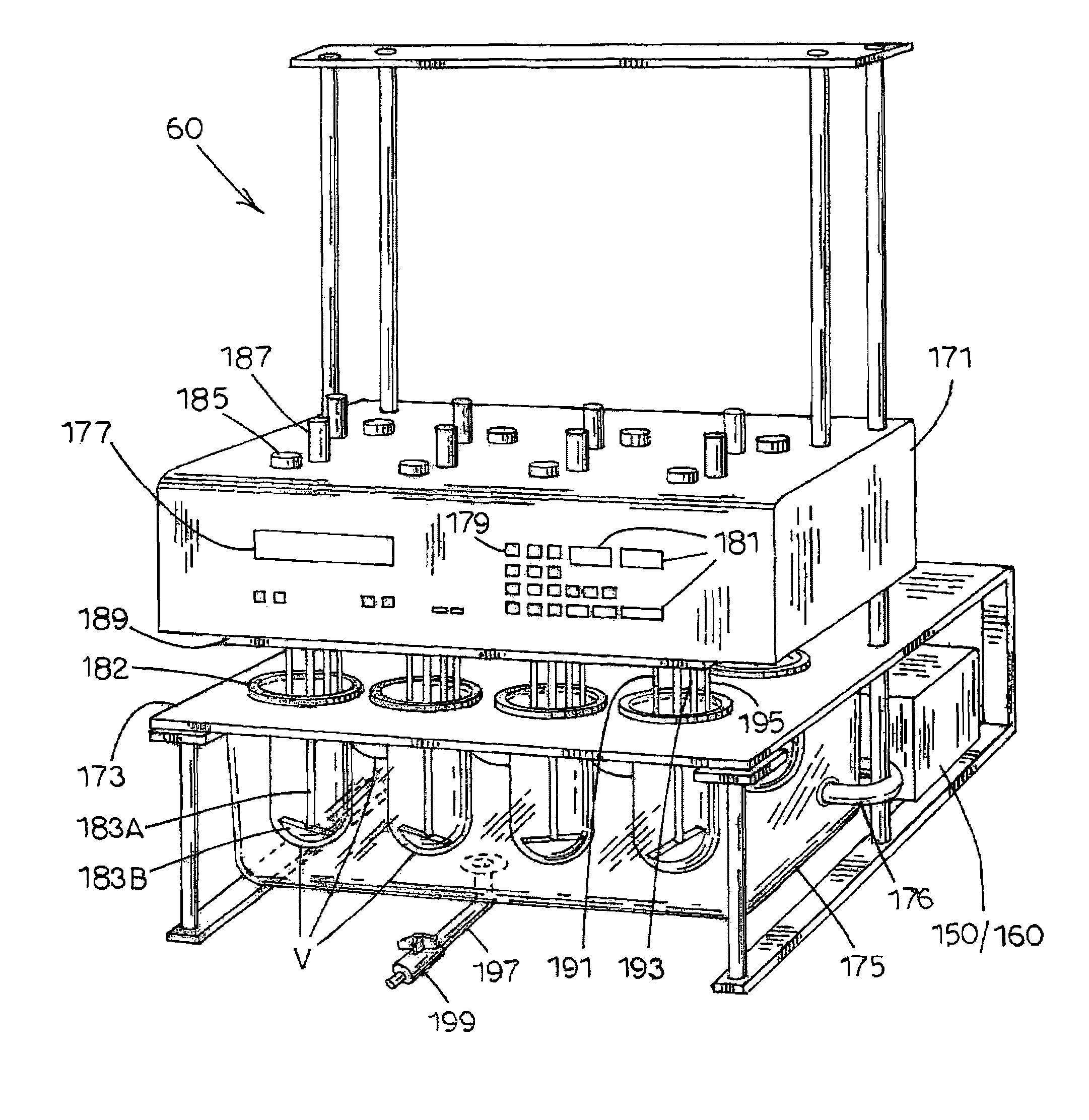Fiber-optic dissolution systems devices, and methods
a fiber-optic and system device technology, applied in the field of fiber-optic dissolution systems devices and methods, can solve the problems of current fiber-optic techniques, inaccurate data production, and turbulence in the dissolution media of fiber-optic probes
- Summary
- Abstract
- Description
- Claims
- Application Information
AI Technical Summary
Benefits of technology
Problems solved by technology
Method used
Image
Examples
Embodiment Construction
[0051]In general, the term “communicate” (e.g., a first component “communicates with” or “is in communication with” a second component) is used herein to indicate a structural, functional, mechanical, optical, or fluidic relationship between two or more components or elements. As such, the fact that one component is said to communicate with a second component is not intended to exclude the possibility that additional components may be present between, and / or operatively associated or engaged with, the first and second components.
[0052]As used herein, the terms “beam,”“pulse,” and “optical signal” are intended to be interchangeable to indicate that the present invention is applicable to the transmission of light energy by both continuous and non-continuous methods.
[0053]Referring now to FIG. 1, a dissolution media sampling system, generally designated 10, is illustrated in accordance with the present invention. Sampling system 10 includes a plurality of (e.g., six) test vessels V1-V6...
PUM
 Login to View More
Login to View More Abstract
Description
Claims
Application Information
 Login to View More
Login to View More - R&D
- Intellectual Property
- Life Sciences
- Materials
- Tech Scout
- Unparalleled Data Quality
- Higher Quality Content
- 60% Fewer Hallucinations
Browse by: Latest US Patents, China's latest patents, Technical Efficacy Thesaurus, Application Domain, Technology Topic, Popular Technical Reports.
© 2025 PatSnap. All rights reserved.Legal|Privacy policy|Modern Slavery Act Transparency Statement|Sitemap|About US| Contact US: help@patsnap.com



